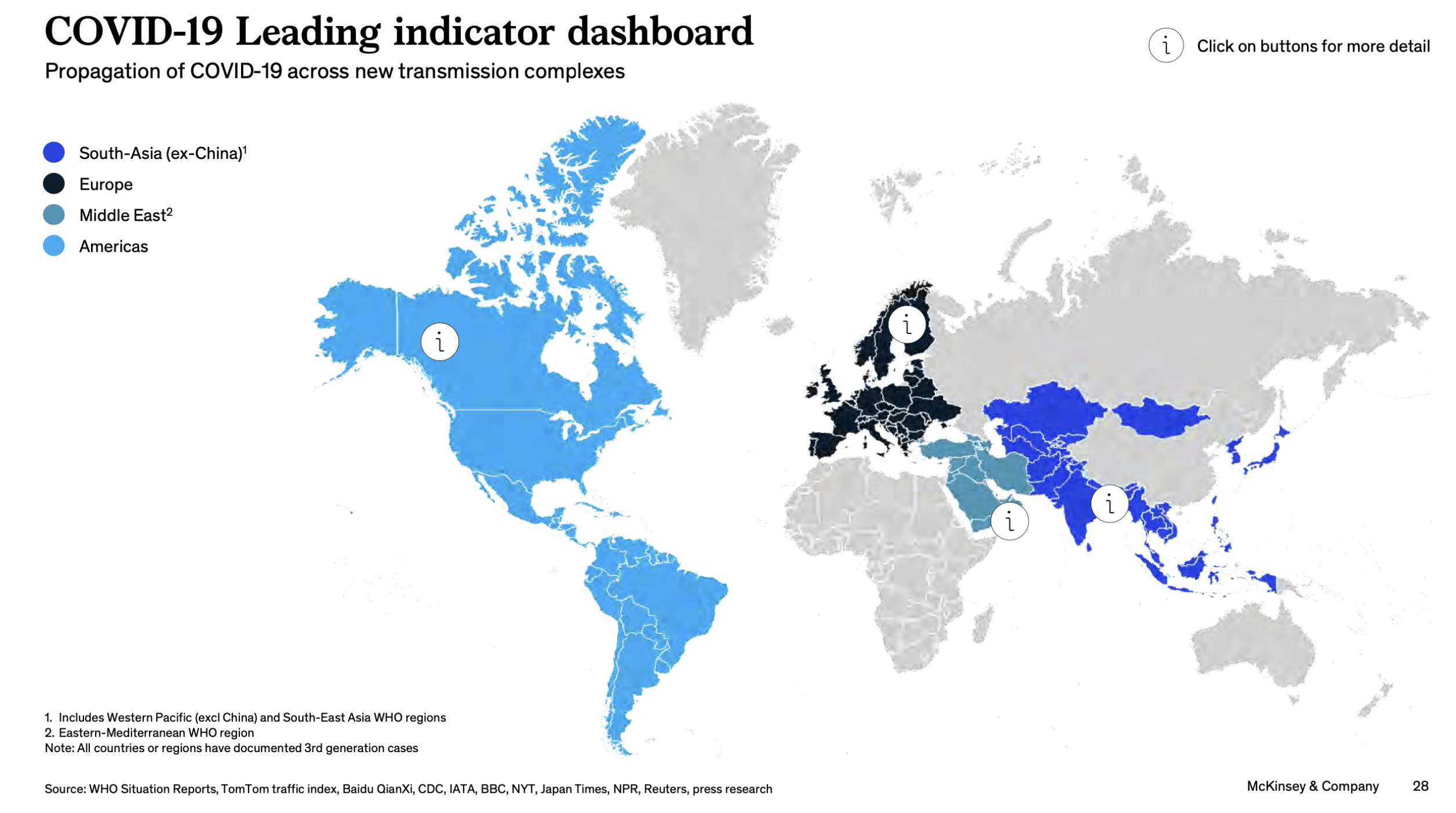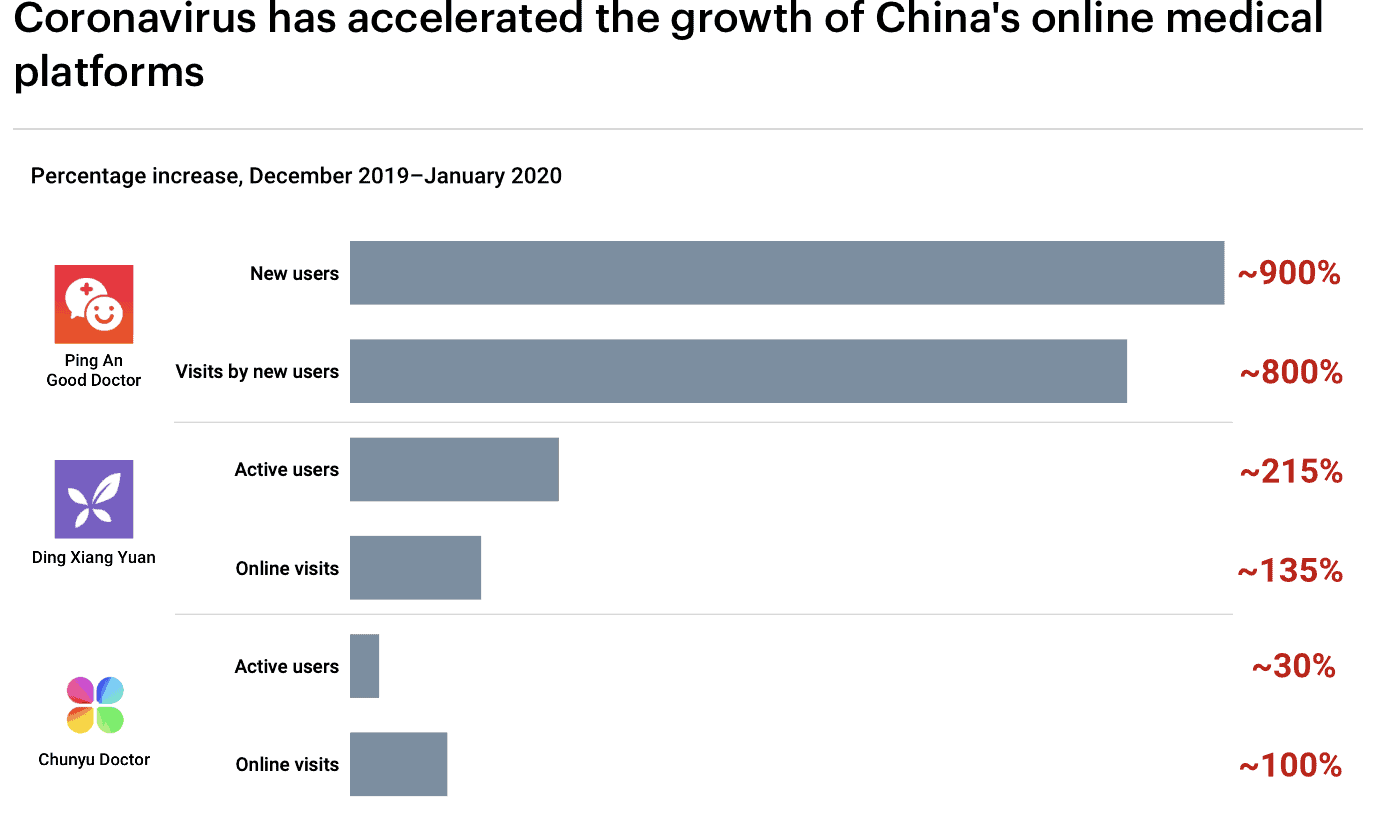We live in a world full of noise such as expectations, pressures, appearances, and uncertainties. […]
I was curious to see the impact of COVID-19 on the industries which will thrive in the aftermath. It seems like Telemedicine, remote working and learning, live streaming and virtual conferences might be the key winners.
In Mckinsey & Company's report, Business impact due to COVID-19 Delayed Recovery, they highlighted 2 possible scenarios.
Delayed Recovery: The virus continues to spread across the Middle East, Europe and US until mid Q2 2020, when virus seasonality combined with a stronger public health response drives case load reduction
Prolonged Contraction: The virus spreads globally without a seasonal decline, creating a demand shock that lasts until Q2 2021. Health systems are overwhelmed in many countries, especially the poorest, with large- scale human and economic impact
Economic impact of Scenario 1
Large-scale quarantines, travel restrictions, and social-distancing measures drive a sharp fall in consumer and business spending until the end of Q2, producing a recession. Although the outbreak comes under control in most parts of the world by late in Q2, the self-reinforcing dynamics of a recession kick in and prolong the slump until the end of Q3. Consumers stay home, businesses lose revenue and lay off workers, and unemployment levels rise sharply. Business investment contracts, and corporate bankruptcies soar, putting significant pressure on the banking and financial system.
Monetary policy is further eased in Q1 but has limited impact, given the prevailing low interest rates. Modest fiscal responses prove insufficient to overcome economic damage in Q2 and Q3. It takes until Q4 for European and US economies to see a genuine recovery. Global GDP in 2020 falls slightly.
Economic impact of Scenario 2
Demand suffers as consumers cut spending throughout the year. In the most affected sectors, the number of corporate layoffs and bankruptcies rises throughout 2020, feeding a self-reinforcing downward spiral.
The financial system suffers significant distress, but a full-scale banking crisis is averted because of banks’ strong capitalization and the macroprudential supervision now in place. Fiscal and monetary-policy responses prove insufficient to break the downward spiral.
The global economic impact is severe, approaching the global financial crisis of 2008–09. GDP contracts significantly in most major economies in 2020, and recovery begins only in Q2 2021.




Singapore’s Foreign Minister shared his sentiments on the two possibilities on how the current outbreak could pan out:
- The virus spread turns into “a global pandemic” with potentially “horrendous” impact;
- It becomes endemic, which means it turns into one of the usual viruses that cause illnesses in people.
Given the uncertainty of the situation, I am delaying my deployment of funds into the stock markets for the time being. There has been a lot of buzz about don't try to catch a falling knife.
A falling knife is a colloquial term for a rapid drop in the price or value of a security. Don't try to catch a falling knife means "wait for the price to bottom out before buying it" Catching a falling knife suggests that buying into a market with a lot of downward momentum can be extremely dangerous - just like trying to catch an actual falling knife. I will patiently wait for signs that the knife is about to land on the ground, given the limited funds I have as a 25-year old.
For some who have yet to deploy their funds systematically on this downwards trend, it would be a relief to come across upon Mark Cuban's ‘No. 1 rule of investing’: when you don’t know what to do about the market: Do nothing. “If you don’t fully understand the risks of an investment you are contemplating, it’s OK to do nothing,”
Once the COVID-19 threat passes, I think it will be interesting to observe if Coronavirus will change the way we live and work. It may push some technologies into the spotlight, for sure. Some precautionary measures to stem the spread of COVID-19 may change market dynamics and may boost the growth of these sectors: Telemedicine, remote working and learning, live streaming and virtual conferences.
Telemedicine
In China, there have been rising cases of digital adoption for diagnosis and treatment as hospitals had to turn away patients with other ailments. To avoid contamination and crowds at hospitals, many are seeking treatment and advice on the internet.

Healthcare is being redefined during this COVID-19 scare. In the US, Medicare expands US telehealth coverage to enable older adults to seek medical advice with doctors from home, without potentially exposing themselves or others to the virus. Recent rollout: a bill for coronavirus funding in the U.S. Congress waives the rules that usually restrict video services for people on Medicare, a move that really emphasizes the potential for telehealth in not only this current outbreak but in the future.
Some Singaporeans have been using Doctor Anywhere app in Singapore. As my healthcare insurance only covers selected clinics, I have not tried it yet. For the app, a 10-minute consultation costs S$30. The doctors can prescribe medication, issue specialist referrals and even electronic Medical Certificates (MC).
I am not sure if many will continue to favour internet hospitals after the COVID-19 epidemic because physical examination of the patient remains necessary and critical, but Investopedia highlighted the global market for telemedicine technology to be estimated at $29.6 billion for 2017, with a projected compound annual growth rate of 19% from 2017 to 2024. The challenges for Telemedicine can be found here.
Remote working and learning
Remote working
From the time I did my internships to starting my first job, there has been a transition from having one dedicated seat per employee to hot desking as a way to promote a collaborative way of working. Although there are some some challenges poised such as the strain on IT and some companies' culture of secrecy, would working from home be the future?
Popular tools for remote working : Google hangouts, Microsoft Teams, Zoom, Slack by Slack Technologies
Remote learning
As schools scramble in their transition towards virtual classes to curb the spread of the virus, COVID-19 will require instructors to learn new tools and try new teaching techniques going forward. Although Slack is used primarily in business, it has recently gained some traction in the classroom.
Education technology seems like a force to be reckon with going forward. In China, online education stocks had risen, with GSX Techedu Inc. and TAL Education Group, which offer K-12 programming in China, gaining value.

Live-streaming and virtual conferences
As I was reading Warren Buffett's Letters to Berkshire Shareholders, I realised that their 2016 annual meeting was webcasted worldwide via Yahoo! webcast. It was their first-ever live-stream of the annual shareholders meeting. Back then, this arrangement was to modestly decrease attendance (>40,000 attendees in 2015). Due to the ongoing coronavirus pandemic, Microsoft’s Build developer event is moving from Seattle to a a digital event.
There's 3 Chinese Live-Streaming stocks to keep a look out for

Thank you for reading! Please like my Facebook page to get the latest updates.







